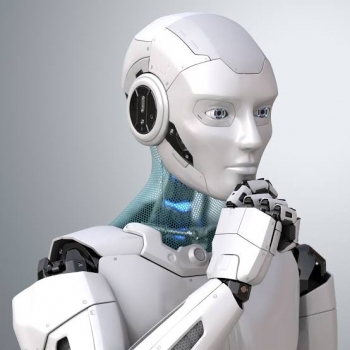News And PoliticsReligion And PrinciplesSocial SciencesAgricultureCommunications And EntertainmentHealth And LifestyleArts And EducationSports And FitnessRelationship And MarriageOthersNigeriapoliticsVehicles And MobilityEngineeringPersonal Care And BeautyScience And TechnologyIT And Computer ScienceFood And Kitchen
profile/5309IMG_20181126_191303.jpg
Ematy1

ROBOTS IN OUR SERVICES
~3.8 mins read
A robot is a machine, especially one programmable by a computer, capable of carrying out a complex series of actions automatically. Robots can be guided by an external control device or the control may be embedded within. Robots may be constructed on the lines of human form, but most robots are machines designed to perform a task with no regard to their aesthetics.
Robots can be autonomous or semi-autonomous and range from humanoids such as Honda's Advanced Step in Innovative Mobility (ASIMO) and TOSY's TOSY Ping Pong Playing Robot (TOPIO) to industrial robots, medical operating robots, patient assist robots, dog therapy robots, collectively programmed swarm robots, UAV drones such as General Atomics MQ-1 Predator, and even microscopic nano robots. By mimicking a lifelike appearance or automating movements, a robot may convey a sense of intelligence or thought of its own. Autonomous things are expected to proliferate in the coming decade, with home robotics and the autonomous car as some of the main drivers.
The branch of technology that deals with the design, construction, operation, and application of robots as well as computer systems for their control, sensory feedback, and information processing is robotics. These technologies deal with automated machines that can take the place of humans in dangerous environments or manufacturing processes, or resemble humans in appearance, behavior, or cognition. Many of today's robots are inspired by nature contributing to the field of bio-inspired robotics. These robot makers have also created a newer branch of robotics: soft robotics.
From the time of ancient civilization there have been many accounts of user-configurable automated devices and even automata resembling animals and humans, designed primarily as entertainment. As mechanical techniques developed through the Industrial age, there appeared more practical applications such as automated machines, remote-control and wireless remote-control.
The term comes from a Slavic root, robot-, with meanings associated with labor. The word 'robot' was first used to denote a fictional humanoid in a 1920 Czech-language play R.U.R. (Rossumovi Univerzální Roboti - Rossum's Universal Robots) by Karel ÄŒapek, though it was Karel's brother Josef ÄŒapek who was the word's true inventor. Electronics evolved into the driving force of development with the advent of the first electronic autonomous robots created by William Grey Walter in Bristol, England in 1948, as well as Computer Numerical Control (CNC) machine tools in the late 1940s by John T. Parsons and Frank L. Stulen. The first commercial, digital and programmable robot was built by George Devol in 1954 and was named the Unimate. It was sold to General Motors in 1961 where it was used to lift pieces of hot metal from die casting machines at the Inland Fisher Guide Plant in the West Trenton section of Ewing Township, New Jersey.
Robots have replaced humans in performing repetitive and dangerous tasks which humans prefer not to do, or are unable to do because of size limitations, or which take place in extreme environments such as outer space or the bottom of the sea. There are concerns about the increasing use of robots and their role in society. Robots are blamed for rising technological unemployment as they replace workers in increasing numbers of functions. The use of robots in military combat raises ethical concerns. The possibilities of robot autonomy and potential repercussions have been addressed in fiction and may be a realistic concern in the future.
Mobile robots have the capability to move around in their environment and are not fixed to one physical location. An example of a mobile robot that is in common use today is the automated guided vehicle or automatic guided vehicle (AGV). An AGV is a mobile robot that follows markers or wires in the floor, or uses vision or lasers. AGVs are discussed later in this article.
Mobile robots are also found in industry, military and security environments. They also appear as consumer products, for entertainment or to perform certain tasks like vacuum cleaning. Mobile robots are the focus of a great deal of current research and almost every major university has one or more labs that focus on mobile robot research.
Mobile robots are usually used in tightly controlled environments such as on assembly lines because they have difficulty responding to unexpected interference. Because of this most humans rarely encounter robots. However domestic robots for cleaning and maintenance are increasingly common in and around homes in developed countries. Robots can also be found in military applications.
Most commonly industrial robots are fixed robotic arms and manipulators used primarily for production and distribution of goods. The term "service robot" is less well-defined. The International Federation of Robotics has proposed a tentative definition, "A service robot is a robot which operates semi- or fully autonomously to perform services useful to the well-being of humans and equipment, excluding manufacturing operations."
Robots are used as educational assistants to teachers. From the 1980s, robots such as turtles were used in schools and programmed using the Logo language.
There are robot kits like Lego Mindstorms, BIOLOID, OLLO from ROBOTIS, or BotBrain Educational Robots can help children to learn about mathematics, physics, programming, and electronics. Robotics have also been introduced into the lives of elementary and high school students in the form of robot competitions with the company FIRST (For Inspiration and Recognition of Science and Technology). The organization is the foundation for the FIRST Robotics Competition, FIRST LEGO League, Junior FIRST LEGO League, and FIRST Tech Challenge competitions.
Advertisement

Link socials
Matches
Loading...
